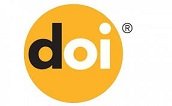Effectiveness of Integrating Drawing in Teaching English Language in Intellectual Disability Classroom
600
352
Abstract
Children with intellectual disabilities have difficulties in language acquisition and learning in general and therefore demands specialized and effective instructional strategies. For this reason, the purpose of this study was to examine effectiveness of integrating drawing, as a specialized instruction, in teaching English Language to children with intellectual disabilities. Quasi-experiment was employed with which pre-test and post-test of both control and experimental groups were analyzed. The results saw the experimental group performing better in the post-test results as compared to the control group, proving that integrating drawing in teaching English Language is an effective instructional strategy. Therefore, the researchers recommend that teachers and other educational implementers working with children with intellectual disabilities should consider integrating drawing in teaching and learning of English Language.
Keywords
Intellectual disabilities, English Language, effectiveness of integrating drawing
Full Text:
PDFReferences
Alhassan, B. & Osei, M (2022). Effectiveness of integrating drawing in teaching English language in intellectual disability classroom. International Journal on Social and Education Sciences (IJonSES), 4(1), 74-86. https://doi.org/10.46328/ijonses.250
DOI: https://doi.org/10.46328/ijonses.250
Refbacks
- There are currently no refbacks.
Copyright (c) 2022 International Journal on Social and Education Sciences

This work is licensed under a Creative Commons Attribution-NonCommercial-ShareAlike 4.0 International License.
Abstracting/Indexing





International Journal on Social and Education Sciences (IJonSES) - ISSN: 2688-7061
affiliated with
International Society for Technology, Education and Science (ISTES)

This work is licensed under a Creative Commons Attribution-NonCommercial-ShareAlike 4.0 International License.
 International Journal on Social and Education Sciences
International Journal on Social and Education Sciences